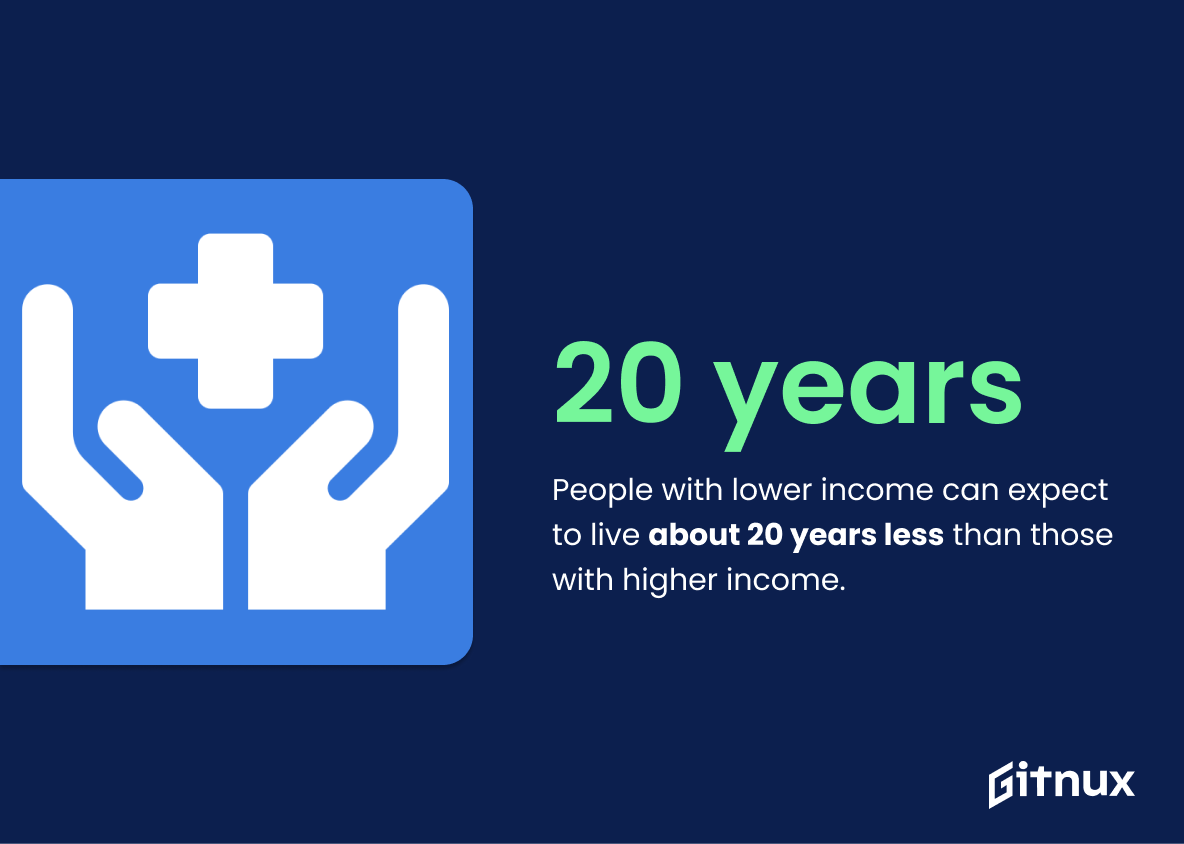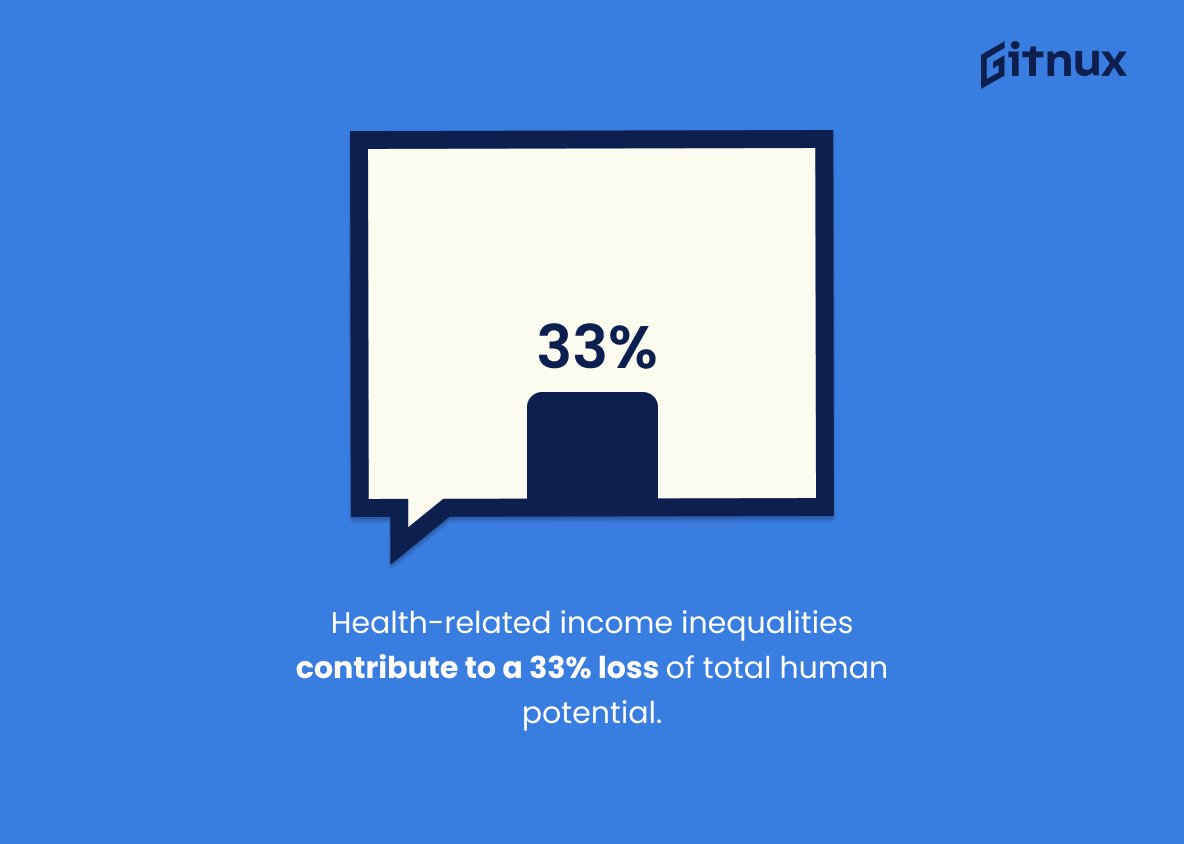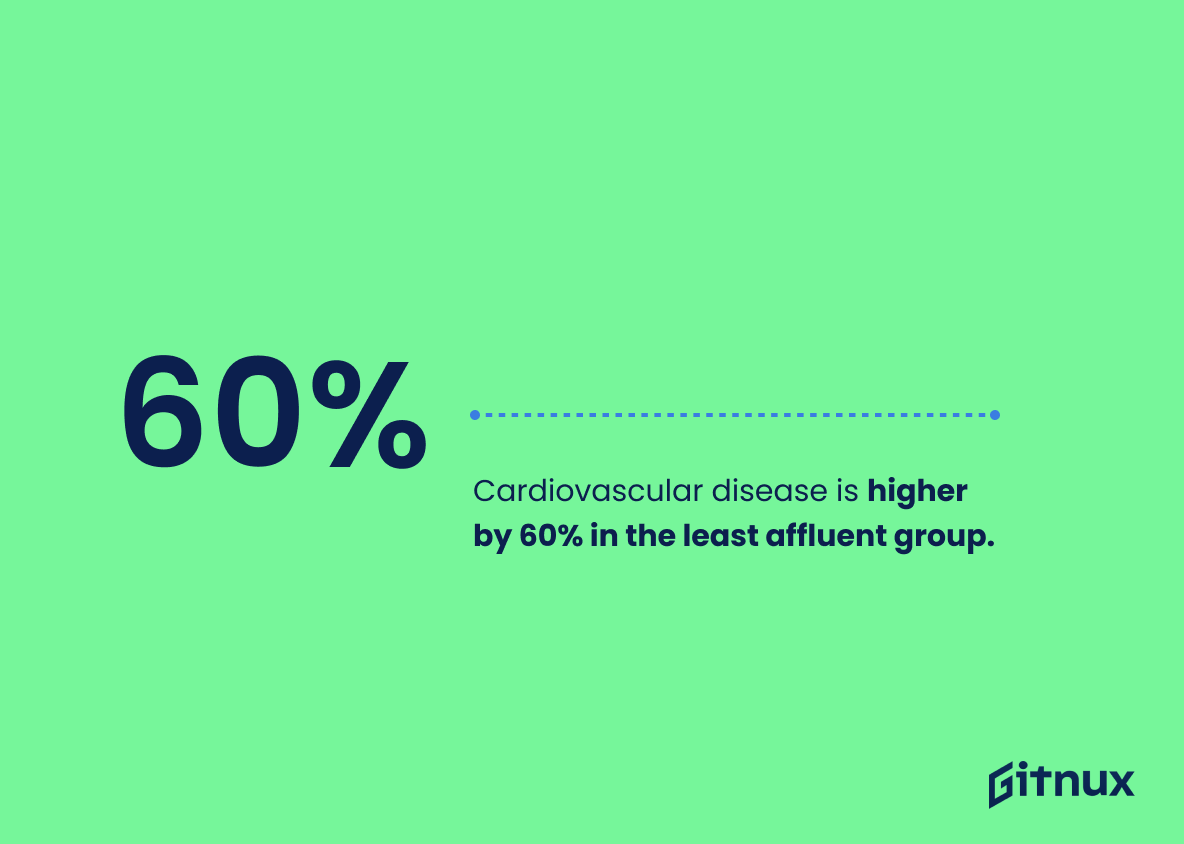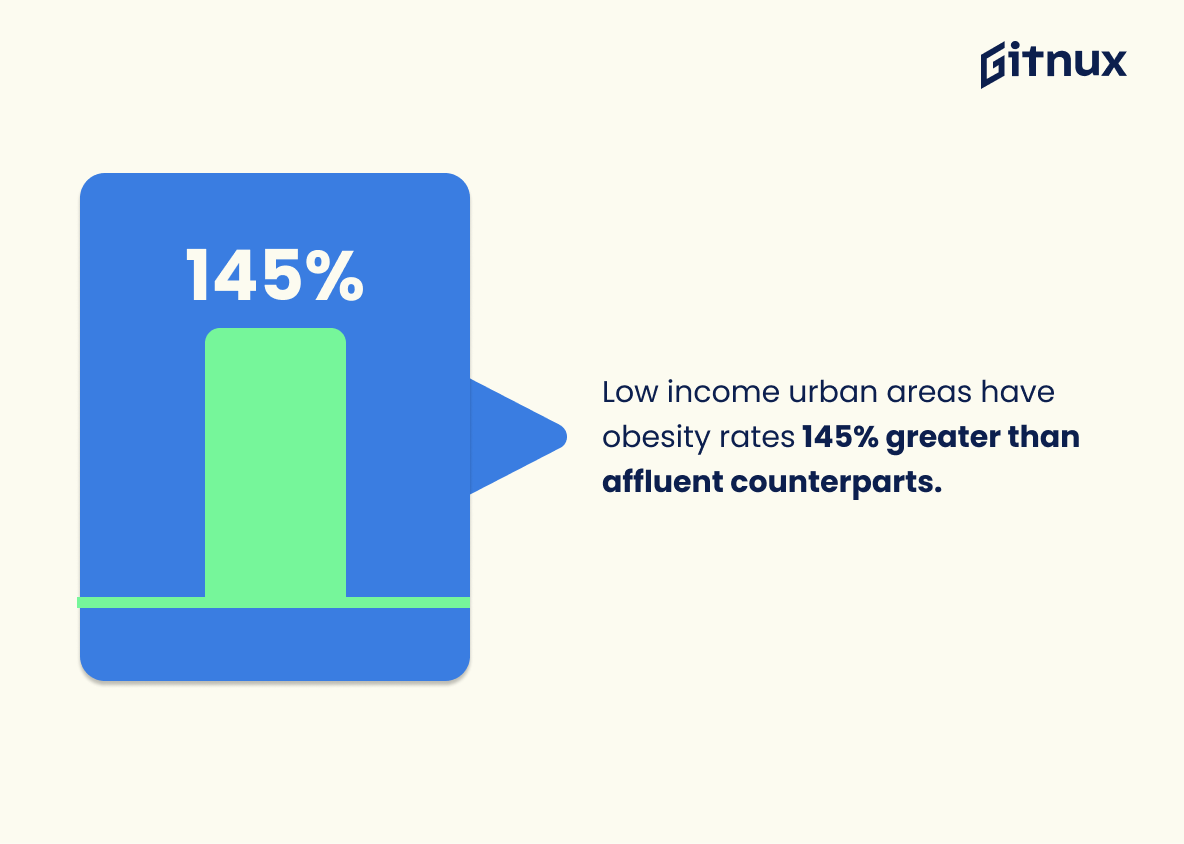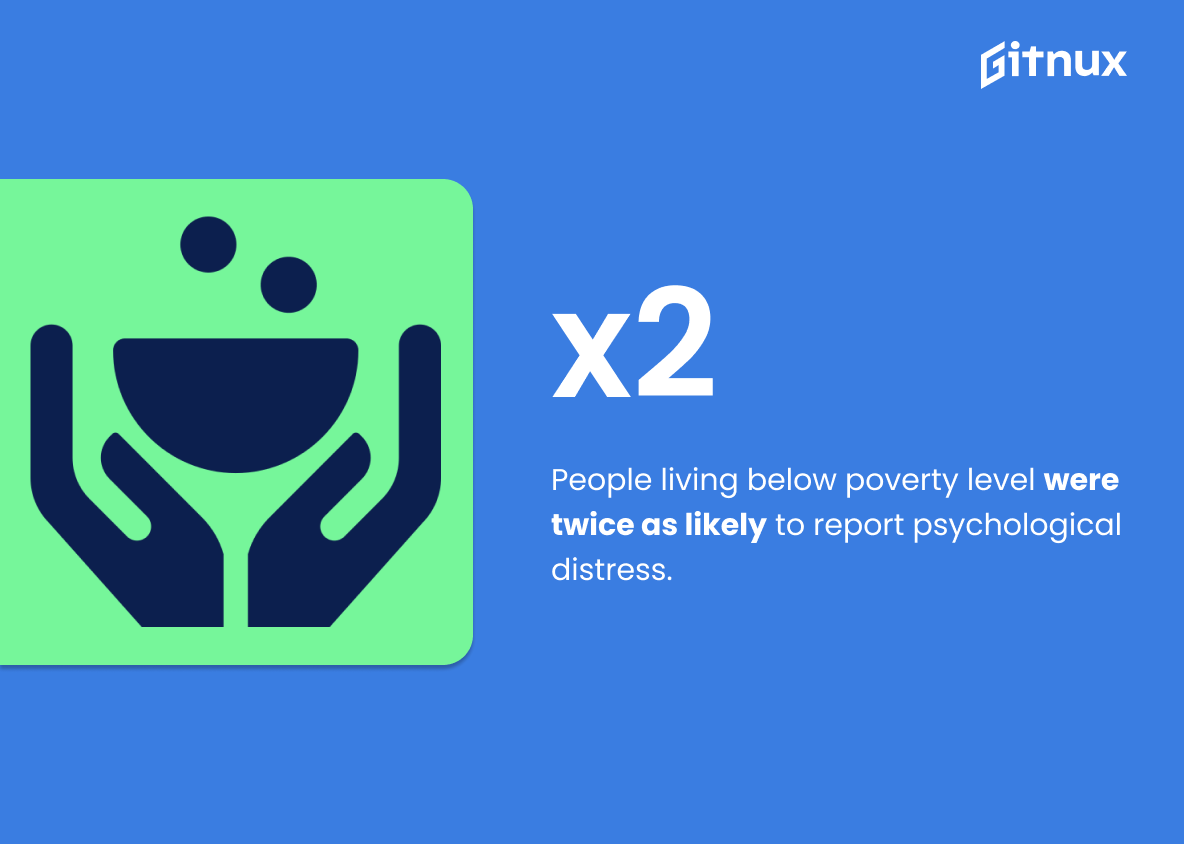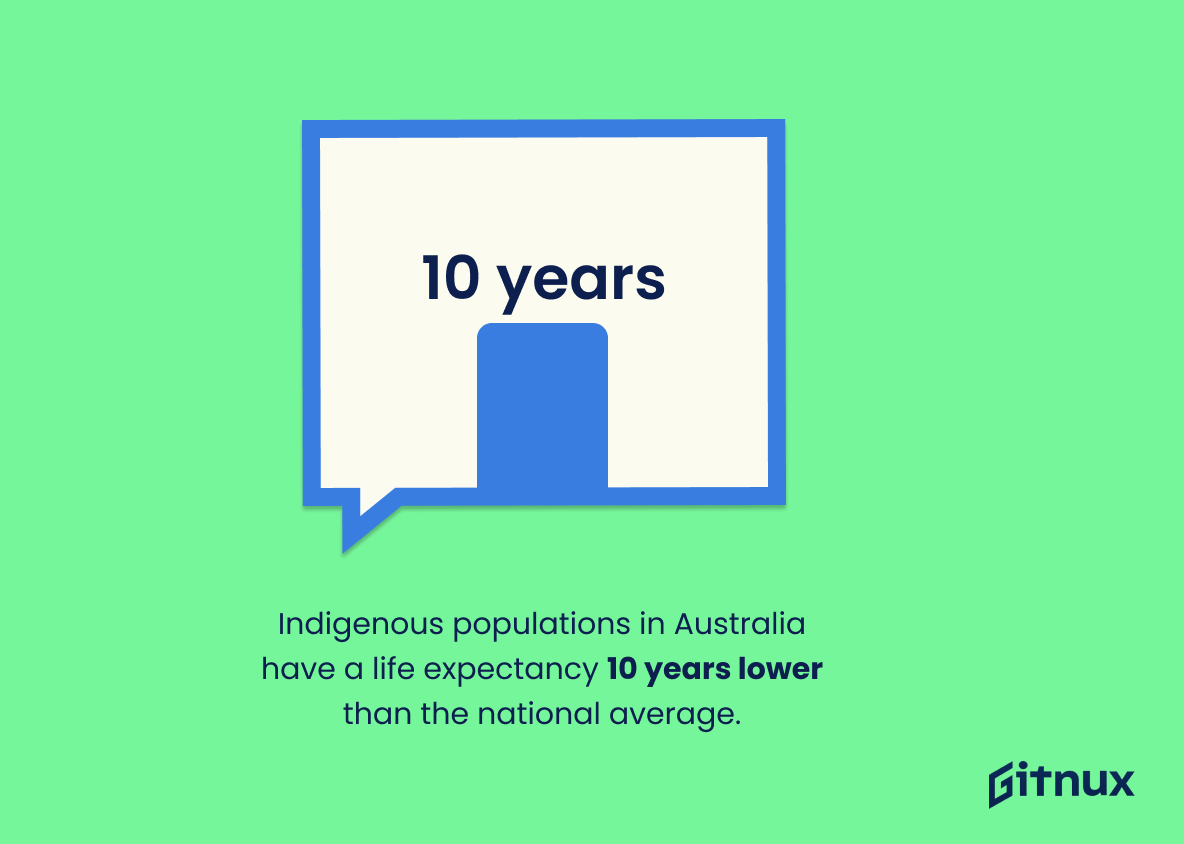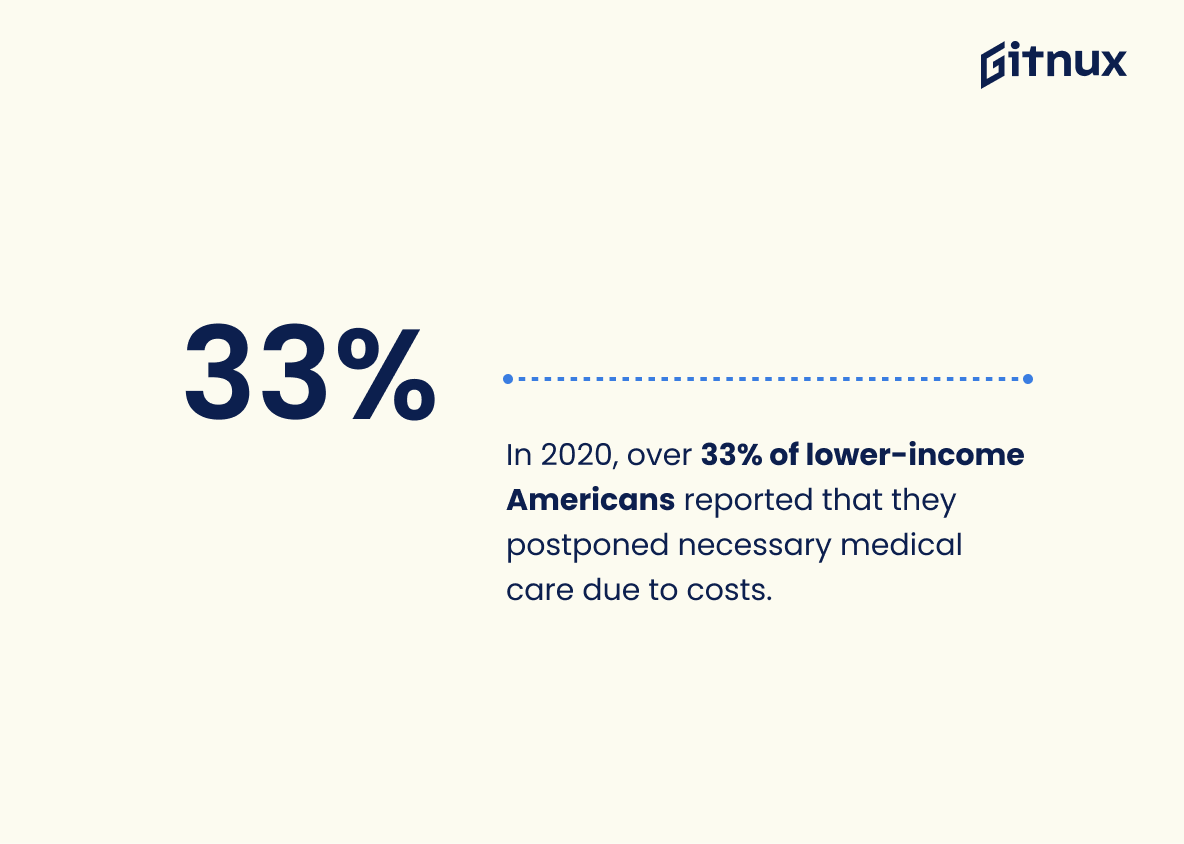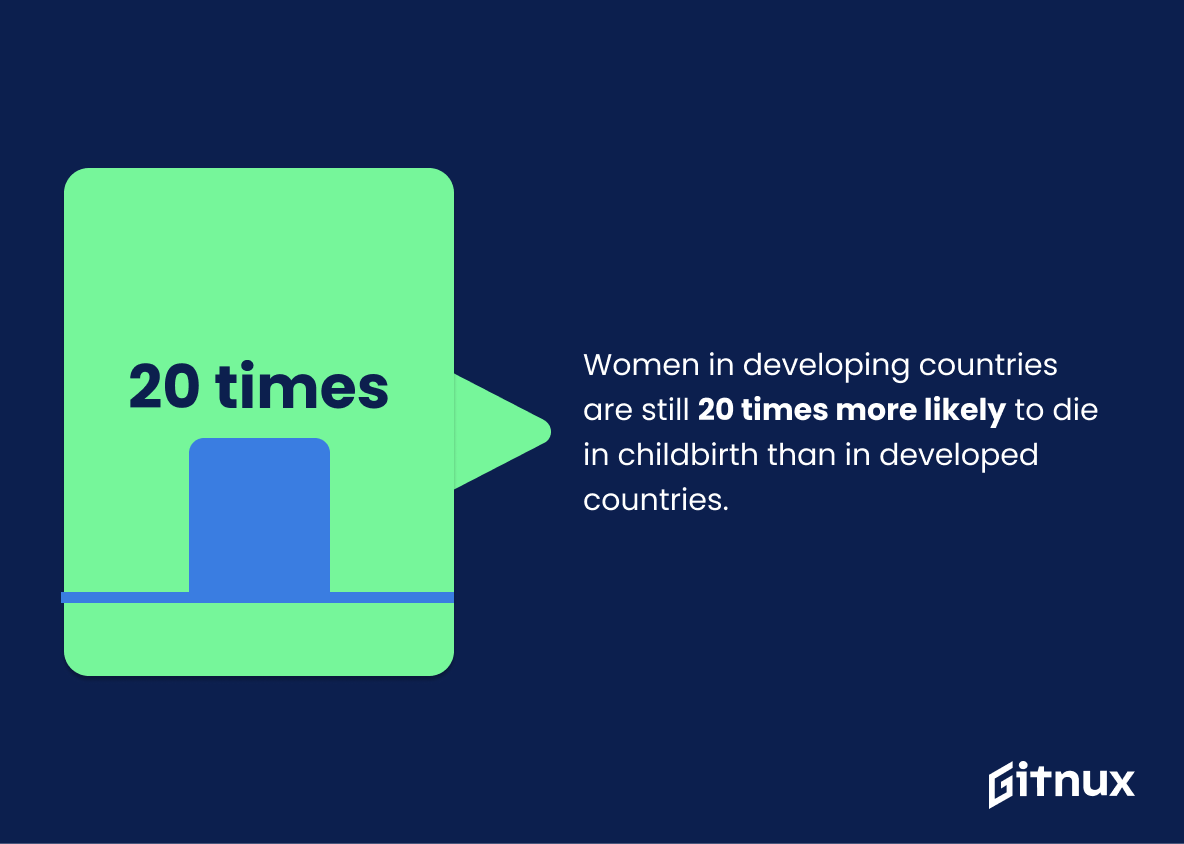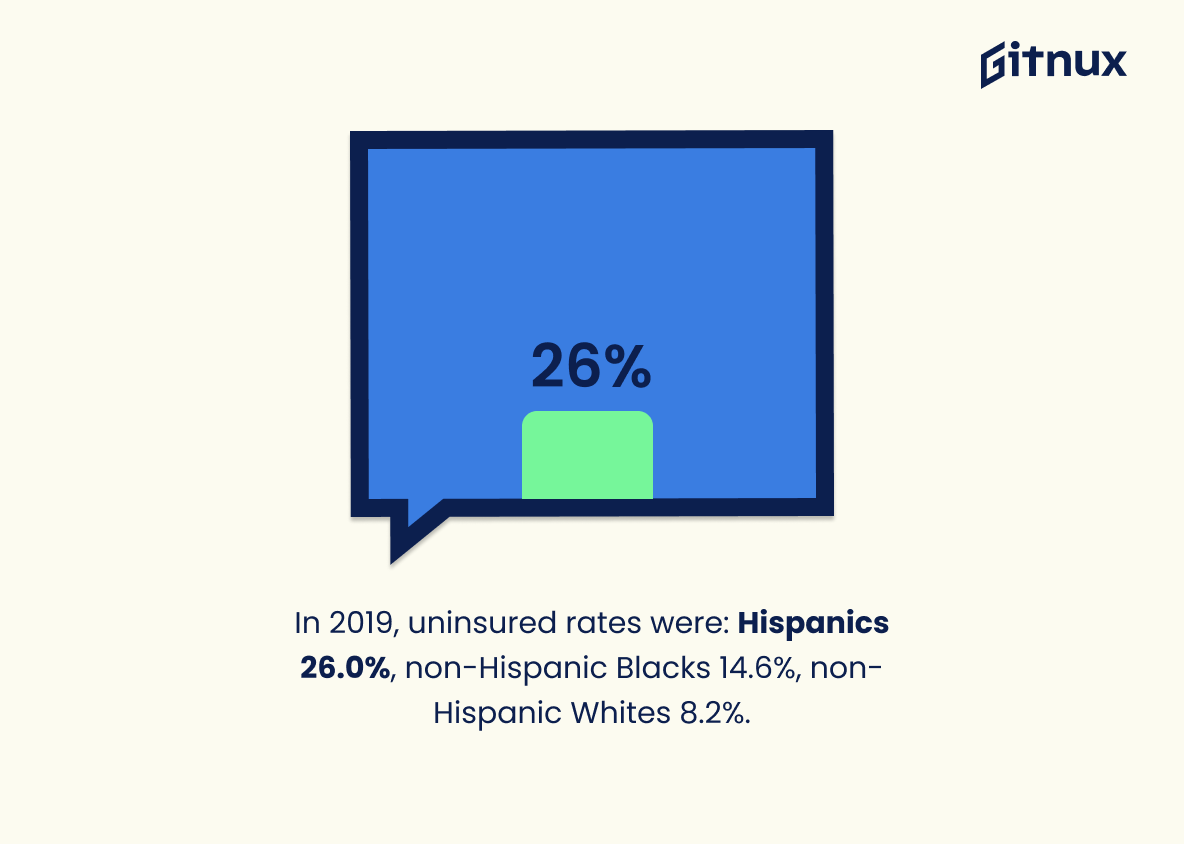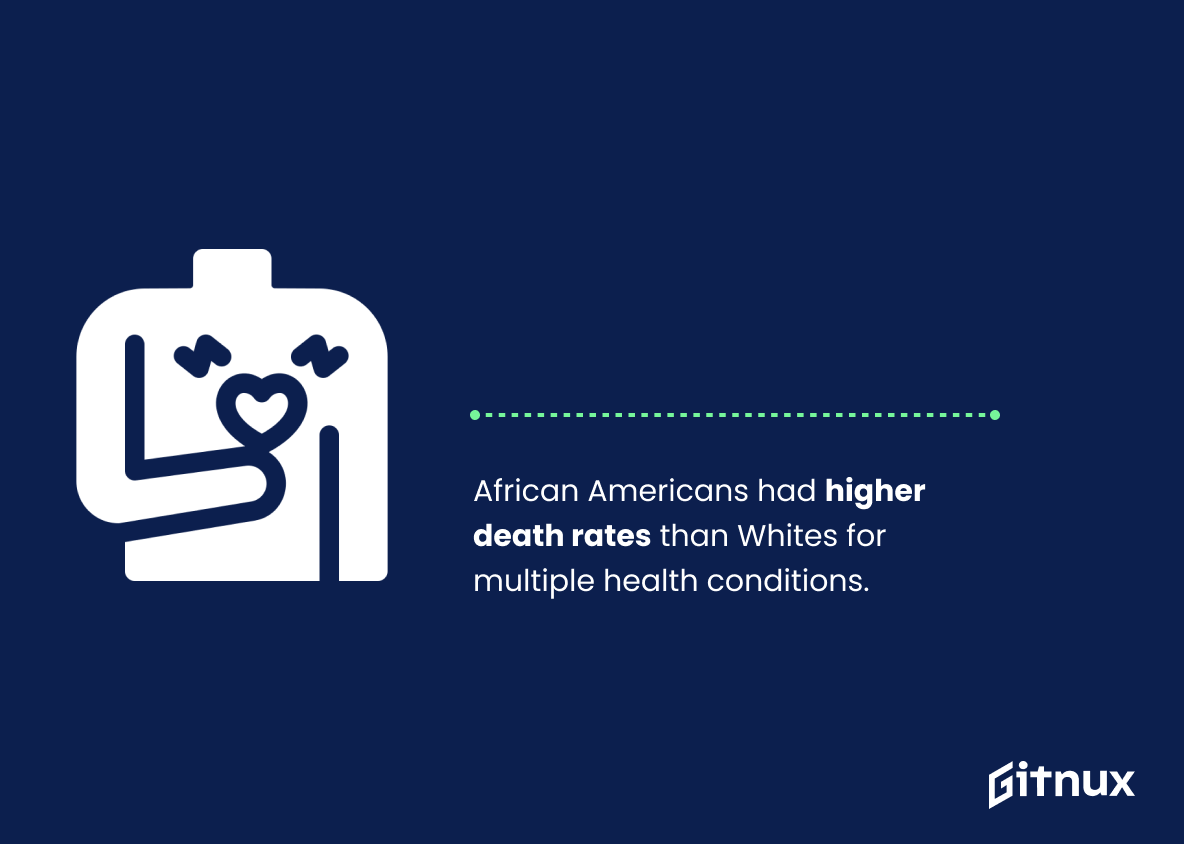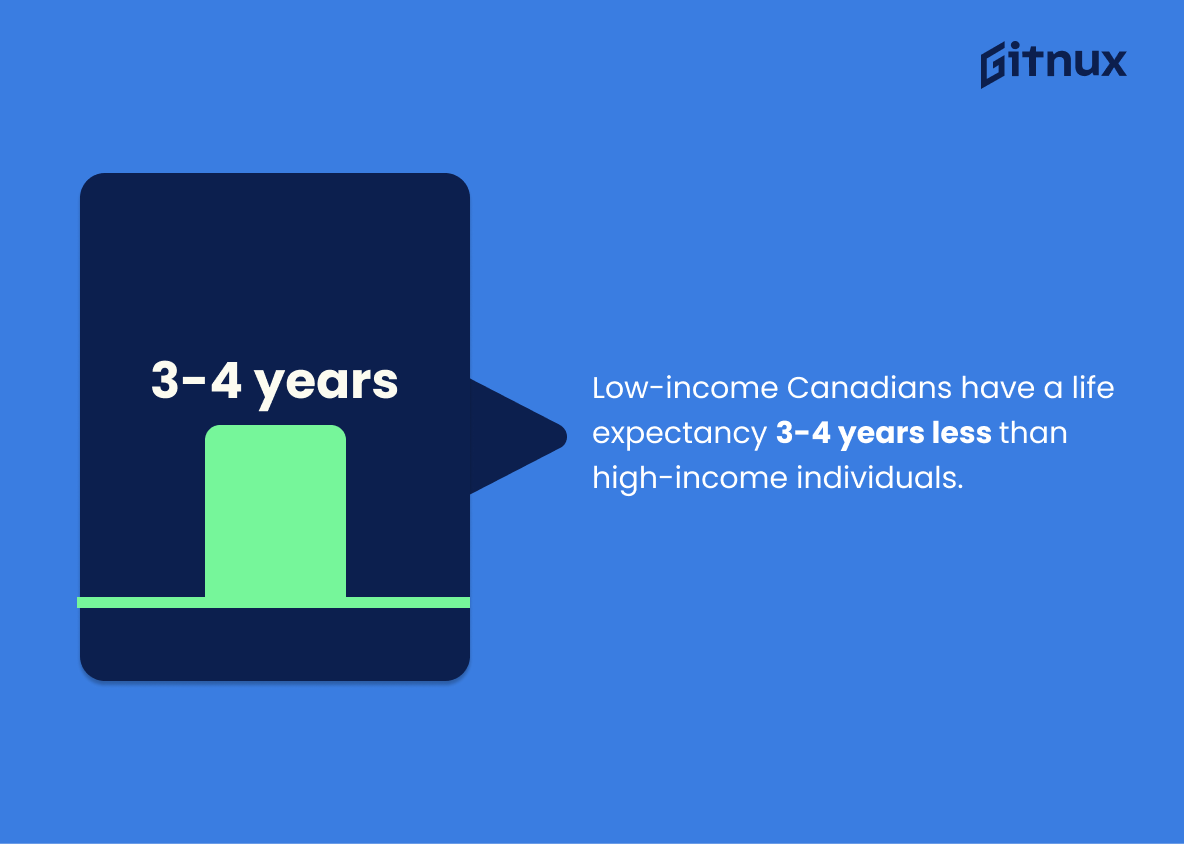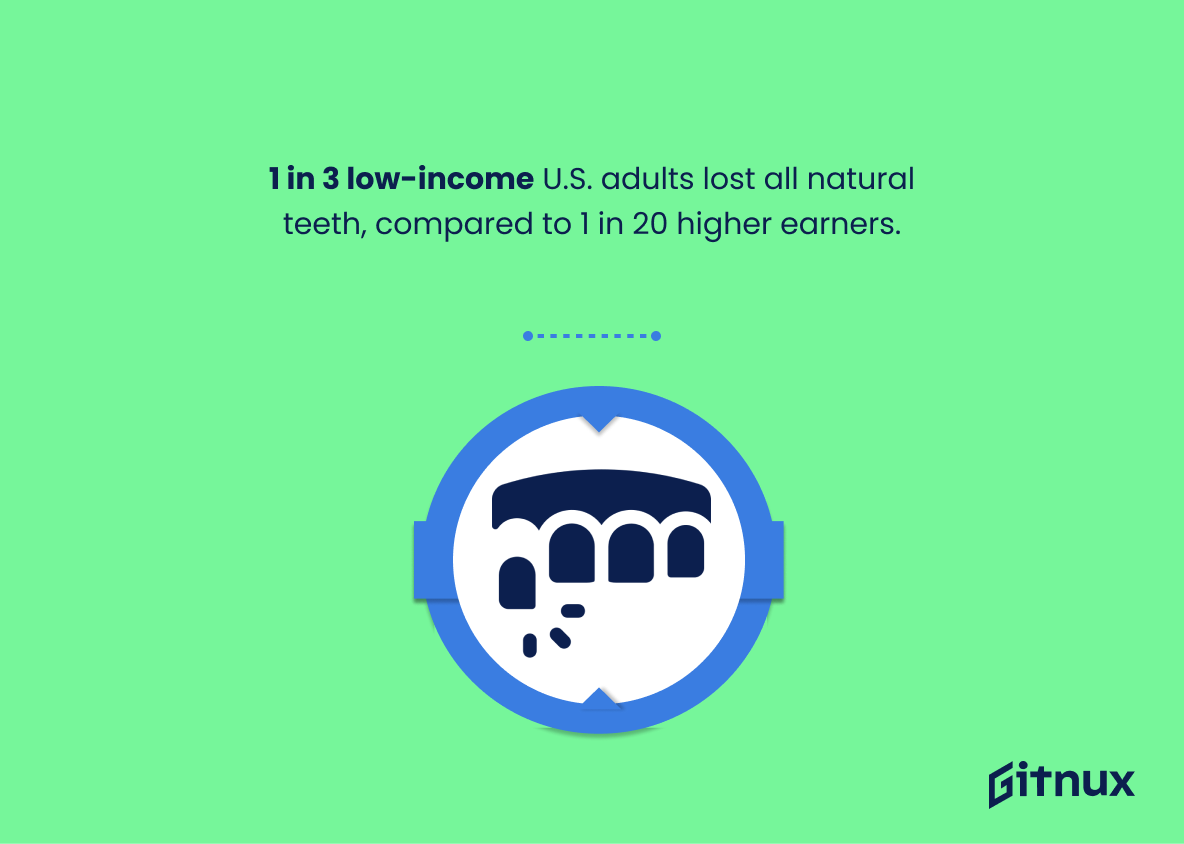In an ideal world, every individual would possess the same opportunity to access quality healthcare and live a healthy life. Unfortunately, our world is far from this utopia, marred by discrepancies and vast disparities known as health inequalities. This blog aims to uncover the stark reality of health inequality statistics.
By untangling complex data, we hope to give you a deeper insight into this widespread issue, revealing how factors such as socioeconomic status, geography, ethnicity, and gender play pivotal roles in determining one’s health. Read on to delve deeper into the statistical labyrinth of health inequalities that continue to challenge our communities and healthcare systems globally.
The Latest Health Inequality Statistics Unveiled
People with lower income can expect to live about 20 years less than those with higher income.
Unlocking the discourse around Health Inequality Statistics, the eye-opening figure unveils a stark reality: the lifespan disparity of about 20 years between the lower and higher-income individuals. This statistic is a thunderbolt from a clear sky, questioning the fundamental principles of equality and justice. It isn’t just a figure; rather, it’s a saga narrating the dire implications of financial disparities on human life expectancy – where wealth equates to health while poverty consigns individuals to early graves.
A grave affirmation, it emphasizes how health is not just linked to genes or lifestyle, but is also intrinsically tethered to socio-economic status. Without a doubt, this statistic serves as a clarion call for policymakers, urging them to rectify this distressing social imbalance by prioritizing health equity and universalizing access to quality healthcare.
Health-related income inequalities contribute to a 33% loss of total human potential.
Unraveling the depths of the statistic ‘health-related income inequalities contributing to a 33% loss of total human potential’ reveals a socially impactful revelation. In the swirling vortex of health inequality statistics, this figure emerges as a stark claim, illuminating the profound influence of economic disparity on health and hence, human potential.
Peel back another layer, and one finds the 33% loss of human potential is not merely a cold, impersonal number, but rather a rallying cry. It bears witness to an array of missed opportunities, thwarted plans, and unfulfilled dreams. The message is clear: health inequality doesn’t just rob individuals of physical wellness, but rather, it siphons away society’s intellectual capital and creative spirit.
Placing this statistic at the fore of the conversation brings into focus the urgent need to bridge the gap not just in healthcare, but also in income and social strata. By doing so, we can harness the full power of human potential, the beating heart of societal progress and innovation.
Cardiovascular disease is higher by 60% in the least affluent group.
The statistic serves as an illustrative beacon, highlighting the glaring health disparities between the least affluent group and other socioeconomic strata. It sheds light on the stark reality that cardiovascular disease exhibits a formidable 60% increase amongst the economically challenged, thus pulling the curtain back on the potent link between wealth and health.
This statistic, therefore, stands as a stark manifestation of health inequality, a poignant reminder that poverty is not only an economic condition but a determinant of health outcomes, underscoring the pressing need to address the inherent societal imbalances imbued in our healthcare system.
Low income urban areas have obesity rates 145% greater than affluent counterparts.
Delving into the compelling statistic that obesity rates in low-income urban areas eclipse those in affluent areas by an astounding 145%, thrusts a stark spotlight on the pressing issue of health inequality. This glaring discrepancy underscores the deep-seated disparities prevalent in our society, notably in terms of access to healthy food, safe environments for physical activity, and preventive healthcare.
In the sweeping panorama of health inequality statistics, this fact stands as a grim sentinel. It gives a quantifiable shape to the invisible yet pervasive divides dictated by socio-economic status – a heart-rending representation of how poverty and affluence can tip the scales, quite literally, on the individual’s health. A blog post highlighting such statistics reaffirms the necessity for relentless advocacy, vigilant policymaking, and effective implementation to flatten this curve of inequality.
When it comes to health, one’s wealth should never dictate the breadth of their options, but the prevailing 145% disparity in obesity rates between the rich and poor suggests otherwise. This statistic is a proverbial call to arms, rallying readers to acknowledge the pervasive injustice and work toward fair and equitable health solutions for all.
In 2016, African American women were 22% more likely to die from heart disease than non-Hispanic white women.
Unraveling the contrasting threads of health disparities, the statistic – ‘ In 2016, African American women were 22% more likely to die from heart disease than non-Hispanic white women’ – not only asserts dominance in the tapestry of health inequality discussions but adds a pulse to it. The raw, numerical proclamation serves as an illuminating beacon. It fosters awareness about disproportionate health outcomes encountered by certain demographics, particularly African American women.
In a blog post canvasing the panorama of health inequality statistics, this data point effectively underscores the extent of disparity rooted in ethnic and racial lines. It invites readers to critically engage with not just health outcomes, but also the policy work, preventive healthcare initiatives and social determinants influencing these outcomes. Above all, this statistic is a stark reminder of our collective responsibility in shaping a universal platform for health equanimity.
People living below poverty level were twice as likely to report psychological distress.
When unraveling the issue of health inequality, one cannot ignore the poignant narrative portrayed by the statistic that individuals living in poverty are twice as likely to experience psychological distress. This paints a stark picture of the interacting forces of economic hardship and mental health. It underscores a sobering inequality – the negative impact of poverty not only on physical wellbeing, but on the psychological landscape as well.
In the quest to understand disparities within health-related matters, this statistic serves as a critical signpost. It bridges the gap between abstract figures and real-world experiences of individuals grappling with both financial stressors and their subsequent mental health implications. Thus, in the realm of health inequality discourse, this statistic isn’t just data—it is a story of hardship, resilience, and systemic imbalance that demands attention and action.
Indigenous populations in Australia have a life expectancy 10 years lower than the national average.
In the grand tapestry of health inequality statistics, the figure reflecting the life expectancy of Indigenous populations in Australia sharply stands out. Serving as a poignant underscore, this statistic echoes the persistent disparities that mark the health landscape of the country. The silent narrative encapsulated in this data insists on the urgency to resolve this 10-year gap—the distance between Indigenous Australians and the national average.
This stark gap encapsulates more than just years—it is a tale of systemic socio-economic issues, geographical health limitations, and historical health neglect. Thus, it compels a spirited and comprehensive response from health policymakers, lending more weight to the dialogue on health inequality – an imperative discoursed in a blog post on Health Inequality Statistics.
In 2020, over 33% of lower-income Americans reported that they postponed necessary medical care due to costs.
This particular statistic serves as a magnifying glass, amplifying the stark income-based disparities in healthcare accessibility that are pervasive across America. Unveiling the distressing reality of over a third of lower-income Americans having to delay crucial medical care due to financial constraints, it starkly highlights the depth of health inequality. It is a critical piece of the narrative, bringing to the forefront the urgent issue of healthcare affordability and its inextricable link to income levels.
Painting a vivid image of the widening health inequity gap, this line of data confronts readers with unavoidable evidence of cost-related barriers inhibiting essential medical treatment for those most vulnerable. A focus on this considerable percentage illuminates the pressing need for robust health policies that ensure equitable access to healthcare, dispelling the shadows of economic disparities.
Women in developing countries are still 20 times more likely to die in childbirth than in developed countries.
In the pulsating world of health inequality statistics, this statistic paints a stark portrait of stark disparities. It unveils the heartbreaking reality that childbirth, a universal and natural process, poses a lethal risk for women in developing countries. It watches quietly from the shadows, a poignant reminder of the colossal gap in maternal healthcare quality and access between the affluent cities and impoverished rural landscapes.
This statistic beckons us to challenge the status quo and redress the systemic imbalances that have made childbearing a life-threatening ordeal for far too many women. Through the understanding and acknowledging of such inequality, we can start concerted efforts towards universal healthcare, aiming to ensure every woman, irrespective of her geographic location, is rightfully entitled to safe childbirth.
Children born in sub-Saharan Africa are 14 times more likely to die before the age of 5 than children in developed regions.
Shining a spotlight on the stark reality of these health inequality statistics, we see a chilling portrait of disparity. A child born in the regions of sub-Saharan Africa has a mortality rate 14 fold higher before they reach the age of five, when compared to their peers in developed regions.
This unsettling discrepancy underscores the immense gap in health resources, access to quality healthcare, nutrition, clean water as well as sanitary living conditions between the global North and South. Thus, it’s a poignant reminder — a call to action — that the world needs to urgently address and bridge this chasm of health inequality that betrays our shared humanity.
LGBT individuals are 2.5 times more likely to suffer from depression and anxiety compared to heterosexual individuals.
Shining a glaring spotlight on the substantial health inequality landscape that currently pervades society, the striking statistic stating that LGBT individuals are 2.5 times more likely to suffer from depression and anxiety compared to heterosexual individuals, unfurls a compelling narrative. It unabashedly brings to the fore the stark discrepancies in emotional well-being experiences shared by different societal subsets.
This statistical revelation crafts a persuasive call to action, demanding renewed focus on mental health inclusivity and parity in medical practice and policy-making. It underlines the urgency to reinforce the mental health support mechanisms customized for the LGBT community, urging us to dig deeper into the societal factors contributing to this disparity. Hence, it plays a pivotal role in weaving a comprehensive narrative about health inequality within the blog post.
In 2019, the percentage of uninsured persons was higher among Hispanics (26.0%) than non-Hispanic Blacks (14.6%) or non-Hispanic Whites (8.2%).
Highlighting the aforementioned data provides a compelling snapshot of health inequality that exists within diverse racial and ethnic groups in the U.S. It accentuates the disparities in healthcare access as a stark reality for Hispanics, who, as per the quoted statistic, experience a significantly higher percentage of insurance absence.
By juxtaposing this with the lower percentages of uninsured non-Hispanic Blacks and non-Hispanic Whites, we underscore the pressing urgency to address these inequalities. In the vast canvas of health inequality statistics, this striking disparity paints a vivid picture of the barriers preventing certain groups from accessing necessary healthcare — a crucial focal point for any meaningful policy reform discussions.
The death rate for African Americans was generally higher than Whites for heart diseases, stroke, cancer, asthma, influenza and pneumonia, diabetes, and HIV/AIDS.
Highlighting the discrepancy in the death rates between African Americans and Whites for various diseases like heart diseases, stroke, cancer, asthma, influenza and pneumonia, diabetes, and HIV/AIDS illuminates the stark landscape of health inequalities present within our society.
It propels interest in the labyrinth of underlying causes, from unequal access to healthcare to socio-economic differences, prompting readers to grapple with the complexities of race-based health disparities. Deep-seated within the grain of this statistic resides a narrative of health inequality, voicing an urgent need to act towards health justice and equity.
In Canada, men and women in the lowest-income category have a life expectancy 3-4 years shorter than those in the highest-income category.
The compelling revelation that men and women in Canada within the lowest-income bracket possess a life expectancy 3-4 years less than their counterparts at the top of the income ladder unveils a raw picture of the disparities prevalent in health sector. Peeking through the keyhole of this hard-hitting statistic, we witness the healthcare inequity in our society where people’s health is not just decided by individual behaviors or biological factors, but also by their income.
In a post dissecting health inequality statistics, this statistic is the litmus test that reflects the acidic truth about socio-economic influence on health. Evidently, it shows the stark contrast between the wealthy and less prosperous, underlining the direct relation between the weight of one’s wallet and their expected lifespan. Life, in this scenario, can tragically and superficially be measured by one’s income – shedding light on a bitter reality that the blog aims to tackle and could potentially highlight solutions or policies to address.
1 in 3 U.S. adults who earn less than $15,000 per year have lost all of their natural teeth, compared to only 1 in 20 who earn at least $35,000.
As we sail through our discourse on Health Inequality Statistics, this striking statistic unfurls like a harshly colored flag on our voyage. It serves as a stark reminder of the profound link between socio-economic status and oral health, highlighting the glaring disparities that haunt our society. A snapshot comparison between U.S adults earning less than $15,000 per year and those earning $35,000 or more reveals a grim panorama: 1 in 3 from the former category have lost all of their natural teeth, in stark contrast to the mere 1 in 20 from the latter.
Walking us through these numbers is akin to traversing a bridge separating two polarized worlds. On one side, we see the painful reality of those earning below $15,000—a sight where losing all natural teeth isn’t an exception, but rather a harsh reality for one-third of the population. On the other hand, this dismal scenario dwindles to only 1 in 20 among those earning $35,000 or more, manifesting how even the most basic health indicators, such as oral health, can be influenced by the financial fortitude of individuals.
Thus, these statistics serve not only as a grim testament to the pronounced health inequalities plaguing our society but also as a poignant wakeup call for the imperative need to bridge this glaring healthcare divide. As we dissect these numbers further and unravel their implications within the broader discourse of health inequality, we realize just how much hinges on our communal commitment to socio-economic upliftment and equal access to healthcare opportunities.
The rate of maternal mortality is more than 3 times higher for Black women than their White counterparts in New York City.
Delving into the stark terrain of health inequality statistics, the harrowing reality of racial disparities utterly shatters any illusion of an equitable healthcare system. This is monumentally embodied in the chilling fact that the maternal mortality rate is over threefold greater for Black women compared to their White counterparts in the heart of New York City. This statistic isn’t just a number, it screams volumes about the systemic racial disparities that currently plague our health care system. It shines a damning spotlight on the profound racial divide that is deeply entrenched in the delivery of healthcare service.
It’s a chilling testament of racial inequality that echoes throughout numerous facets of our society – from income level, education, to access to quality health care. It reminds readers of the pressing urgency to confront and address this life-costing injustice. Equally importantly, it compels us to re-examine the complex web of socio-economic factors contributing to health disparities, and reinforces the dire need for comprehensive healthcare reforms aimed at promoting health equity.
Conclusion
In closing, the exploration of health inequality statistics uncovers unsettling disparities in both access to healthcare and health outcomes between different socioeconomic, racial, and geographical groups. These inconsistencies serve as a stark reminder of the pressing need for comprehensive reforms in global healthcare policies.
With renewed focus on reducing healthcare disparity, increased investments in preventive care, and a commitment to affordable healthcare for all, there is potential to improve these statistics and move towards health equality. The fight for health equality is far from over, but with continued efforts, the statistics we face today can be improved for a more inclusive healthcare future.
References
0. – https://www.data.unicef.org
1. – https://www.www.nber.org
2. – https://www.www.kff.org
3. – https://www.www.cdc.gov
4. – https://www.www.cfhi-fcass.ca
5. – https://www.www.health.gov.au
6. – https://www.www.bhf.org.uk
7. – https://www.pubmed.ncbi.nlm.nih.gov
8. – https://www.www1.nyc.gov
9. – https://www.www.who.int
10. – https://www.www.ncbi.nlm.nih.gov
11. – https://www.minorityhealth.hhs.gov
